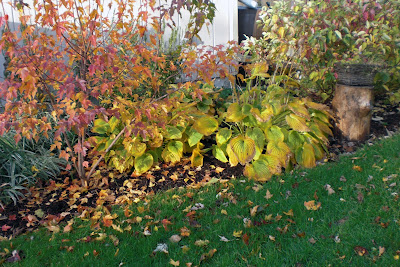Each year I arrange my outdoor containers with greens for the holidays and throughout the long days of Winter. This year is no exception.
Once again, I cut the bulk of my greens at our local dump where large limbs of pruned or taken down trees wait to be chipped into mulch. Very inexpensive.
This year I also drew inspiration from the garden. Seed heads of Sunflower, Black Eyed Susan, Sea Holly, and dried Hydrangea blooms add to the arrangements. I also looked to nature. Red Staghorn Sumac, branches, Pine Cones and Milkweed Pods are tucked in among the greenery.
A basket on our new back porch steps. (The greenboard makes for a festive backdrop. Hopefully by next year we will have permanent siding.) An old, twisted root winds its way through this arrangement.
I stick my greens right into dirt and then water them generously. If the dirt is frozen, I bring the containers indoors to defrost. Sometimes an old screwdriver helps to make a "planting hole." This incredibly warm Fall, I did not have to worry.
This year, I placed Summer containers throughout the garden so I also decided to create some Winter containers throughout the garden. The greenery will be welcome once the snow begins to fall.
This basket takes the place of ceramic bird bath tray.
These containers were filled with flowers but now they are green. The birds are enjoying the seed heads.
The window box to the shed.
A cedar box and galvanized tub on the front porch.
The matching baskets on our front steps with Milkweed Pods. If those seeds spread around the neighborhood and Milkweed pops up, oh well, the Monarchs will appreciate them.
I love the fuzzy antler-like stem of the Staghorn Sumac.
A few lighted grapevines, a Hemlock wreath on our front door made by our neighbor, and candle lights in the windows are the extent of my outdoor holiday decor. Inside, I am forcing Paper Whites, something I have not done in years. The anticipation lifts my spirits.
How do you deck your garden for the holidays?






















































